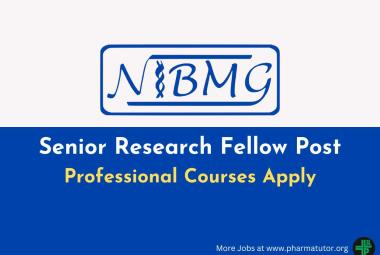 About Author:
About Author:
Kambham Venkateswarlu
Final Year Graduate Student
Sri Lakshmi Narasimha College of Pharmacy,
Palluru, Chittoor-517132, Andhra Pradesh, India.
k.v.reddy9441701016@gmail.com
ABSTRACT:
The term superbug is a nonspecific word that is used to describe any microorganism that is resistant to at least one or more commonly used antibiotics. Some authors restrict its use to microorganisms resistant to two or more antibiotics.
The most common bacteria described as superbug are the following:
* MRSA (Staphylococcus aureus strains resistant to multiple antibiotics)
* VRE (Enterococcus species resistant to vancomycin)
* PRSP (Streptococcus pneumonia strains resistant to penicillin)
* ESBLs (Escherichia coli and other Gram-negative bacteria resistant to antibiotics such as cephalosporins and monobactams)
Emerging superbugs may be multiple drug resistant Clostridium difficile, VRSA (vancomycin resistant S.sureus) and NDM Escherichia coli (New Delhi metallo-beta-lactamase resistant E.coli).
[adsense:336x280:8701650588]
REFERENCE ID: PHARMATUTOR-ART-1655
MRSA:
Methicillin-Resistant Staphylococcus aureus (MRSA)is a bacterium responsible for several difficult to treat infections in humans. It may also be called multidrug resistant Staphylococcus aureus (ORSA).
Methicillin resistant Staphylococcus aureus was discoverd in 1961 in the United Kingdom. MRSA is often referred to in the press as a superbug. Statistical data suggests that as many as 19,000 people per year die from MRSA in the U.S. current data suggests this number has declined by about 25% - 35% in recent years, in part, because of prevention practices at hospitals and home care. The resistant to methicillin was due to a penicillin-binding protein coded for by a mobile genetic element termed the methicillin resistant gene (mecA).
MRSA strains are currently resistant to several different antibiotics such as penicillin, oxacillin, and amoxicillin (Amoxil, Dispermox, Trimox). HA-MRSA is often also resistant to tetracycline (Sumycin), erythromucin and clindamycin (Cleocin).
SCIENTIFIC CLASSIFICATION:
Kingdom: Bacteria
Phylum: Firmicutes
Class: Cocci
Order: Bacillales
Family: Staphylococcaceae
Genus: Staphylococcus
Species: S.aureus
[adsense:468x15:2204050025]
BINOMIAL NAME: Staphylococcus aureus
MRSA CATEGORISATION BY SOURCE OF INFECTION:
1) CA-MRSA - community-acquired MRSA: This occurs in individual that are normally healthy and not receiviong healthcare on an ongoing basis for chronic conditions.
2) HA-MRSA – Hospital (or Healthcare) acquired Methicillin Resistant Staphylococcus aureus which occurs in a hospital.
3) E-MRSA - Epidemic type of MRSA.
BASIC FEATURES AND DESCRIPTIONS:
Methicillin resistant Staphylococcus aureus progresses substantially inside 24-48 hours of first topical symptoms. Later on 72 hrs, MRSA can take hold in human tissues and eventually become resistant to handling. Usually first symptom of these bacteria is small red bumps that resemble pimples, spider bites or boils that may be followed by fever and from time to time rashes. Within a couple of days the bumps get larger, more painful and finally open into deep, pus-filled boils. MRSA is now resistant to methicillin, amoxicillin, penicillin, oxacillin, and other antibiotics.
MEDICATION FOR MRSA:
Types of antibiotic medications that may work include: Clindamycin
Damptomycin
Linezolid
Minocyclin
Tetracyclin
Bactrim
Bactrim DS
Spectra
Spectra DS
Doxycycline
Vancomycin
Mild infections usually respond to Mupirocin medication (Bactrobacin).
SIGNS AND SYMPTOMS OF MRSA INFECTION:
* Cellulotitis
* Boils
* Abscesses
* Sty
* Carbuncles
* Impetigo
* Fever
* Chills
* Low blood pressures
* Joint pains
* Severe headaches
* Shortness of breath
* Rash over most of the body
* Endocarditis
* Necrotizing fasciitis
* Sepsis
* Death
TRANSMISASION OF MRSA INFECTION:
The first is physical contact with someone who is either infected of MRSA. The second way is for people to physically contact MRSA on any objects such as door handles, floors, sinks or towels that have been touched by a MRSA infected person or carrier. Normal skin tissue in people usually doesn’t allow MRSA infection to develop. However, if there are cutes, abrasions or other skin flaws such as psoriasis. People with higher risk of MRSA infection are those with obvious skin breaks and people with depressed immune systems or those with chronic diseases due to MRSA can transmit MRSA by airborne droplets.
DIAGNOSIS OF MRSA:
A skin sample, sample of pus from a wound, blood, urine, or biopsy material is sent to a microbiology lab and cultured for S.aureus. if S. aureus is isolated , the bacteria are then exposed to different antibiotics including methicillin. S.aureus that grows well when methicillin is in the culture is termed MRSA and the patient is diagnosed as MRSA infected.
TREATMENT FOR MRSA INFECTION:
Most MRSA still can be treated by certain specific antibiotics vancomycin, linezolid, and other often in combination with vancomycin. Some CA-MRSA strains are susceptible to trimethoprim-sulfamethoxazole (Bactrim), doxycycline (vibramycin) and Clindamycin (Cleocin).
NDM1:
New Delhi Metallo-beta-lactamase (NDM-1) is an enzyme that makes bacteria resistant to a broad range of beta lactam antibiotics. The gene for NDM-1 is one member of a large gene family that encodes beta lactamase enzymes called carbapenemases. Bacteria that produce carbapenemases are often referred to in the news media as “superbug” because infections caused by them are difficult to treat. Such bacteria are usually only susceptible to polymyxins and tigecycline.
NDM-1 was first identified in December 2009 in a patient hospitalised in New Delhi withg an infection caused by Klebsiella pneumonia. The most common bacteria that make this enzyme are Gram negative such as Escherichia coli and Klebsiella pneumonia.
ENZYME FUNCTION:
Carbapenems are a class of beta-lactam antibiotics which are capable of killing most bacteria by inhibiting the synthesis of one of their cell wall layer. The carbapenemes were developed to overcome antibiotic resistant medicated by bacterial beta-lactamase enzymes. However, the blaNDM-1 gene produces NDM-1, which is a carbapenemase beta-lactamase- an enzyme that hydrolyzes and inactivates these carbapenem antibiotics. The NDM-1 enzyme is one of the class B metallo-beta-lactamase, other types of carbapenemases are class A or class D beta-lactamasesthe class A Klebsiella pneumonia carbapenemase (KPC).
MECHANISM OF DRUG RESISTANCE:
The major sign or symptom that a person is infected with bacteria carrying NDM-1 is failure of antibiotic treatments (oral or I.V) to improve the patients condition and being treated with antibiotic that contains a beta-lactam ring structure.
NEW DRUG:
UK researchers recently revealed that they have developed a new anti-bacterial drug named XF-73, which has the potential to eliminate deadly superbug such as C-Diff and MRSA, within five minutes. C-Diff / Clostridium difficile is a fatal bacterium, which causes intestinal and diarrhoea problems in the carrier, while MRSA / Methicillin-resistant Staphylococcus aureus is responsible for causing numerous infections that hardly respond to any treatment.
RESEARCHERS FINDING:
Researchers carried out series of tests where carriers of the superbug bacteria had XF-73 gel placed inside their noses.
MRSA turned out to be least resistant to the new drug even after 55 repeated exposures in the clinical tests. Researchers further added that XF-73, despite being an anti-bacterial drug, works completely different from antibiotics as it breaks down cell walls and causes rapid loss of its specific parts of bacteria in order to disable them, which is a long procwss.
SIGNIFICANCE OF DRUG IN FIGHTING BACTERIA:
It breaks down cell walls and causes the rapid loss of superbug’s vital contents. Usually antibiotics act by destroying specific parts of bacteria to disable them, a process that takes much longer time.
CONCLUSION:
The new drug XF-73 eliminates the most thr4eatening superbug in 5 min by placing XF-73 gel in noses of infected person.
REFERENCES:
1. Reuters (2009-02-16). Study: Beachgoers more likely to catch MRSA.
2. Raygada Jl and Levine DP (march 30, 2009). Managing CA-MRSA infections: current and Emerging options. Infections in medicine 26 (2).
3. Tacconelli E and DE Angelis, G and Cataldo MA, Pozzi E, Cauda R (Jan 2008). Does antibiotic exposure increase the risk of methicillin-resistant staphylococcus aureus (MRSA) isolation A syatematic review and meta-analysis.
4. Marilynn Marchione (2009-09-12). Dangerous steph germs found at west coast beaches. AP.
5. Zinderman C, Conner B, Malakooti M, LaMar J, Armstrong A, Bohnker A. (may 2004). Community acquired MRSA among Military Recruits. Emerging infectious diseases.
6. Staph (MRSA) infectioneradicated for 14 months.
7. New England journal of medicine. content.nejm.org/cgi/content/full/352/5/468.
8. MRSA: the problem reaches paediatrics- achieves of disease in child hood.
9. Community associated MRSA in hospital nursery and maternity units- CDC.
10. Froncois P and Schrenzel J (2008). Rapid diagnosis and typing of staphylococcus aureus. Staphylococcus: molecular genetics. Caister academic press. ISBN 9781904455295. horizonpress.com/staph.
NOW YOU CAN ALSO PUBLISH YOUR ARTICLE ONLINE.
SUBMIT YOUR ARTICLE/PROJECT AT articles@pharmatutor.org
Subscribe to Pharmatutor Alerts by Email
FIND OUT MORE ARTICLES AT OUR DATABASE









